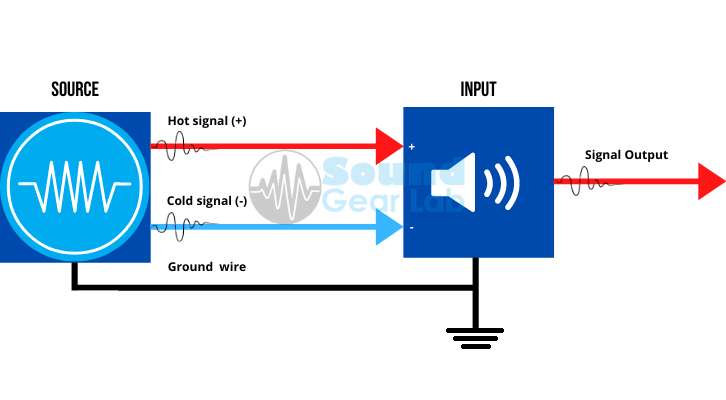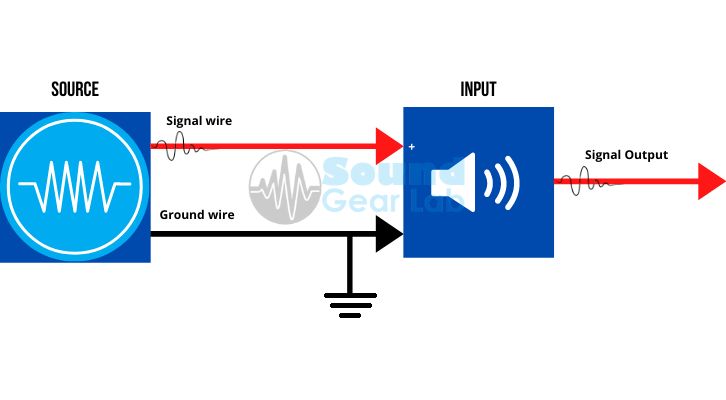How to Charge AirPods Without a Case
Discover the truth about how to charge AirPods without a case. Uncover myths, find alternatives, and safeguard your audio experience.
Cables and connectors used in an audio system will have an impact on the overall sound quality. Understanding how cables carry sound signals from the source to the output device such as headphones is important. This information will help you select the right cable and connectors for the right job, but you also improve the sound quality by avoiding audio degradation.
As you will learn in this post, there are two types of audio signals that cables and connectors (see comprehensive guide to types of audio connectors here) carry. These are balanced and unbalanced audio signals. Let’s take an in-depth look at how these two cables work.
An audio signal is considered balanced when the structure of the cable has three conductors. These three conductors are two signal wires and a ground signal wire. The two signal wires both carry an identical audio signal. However, the signals are sent out of phase or with reversed polarity. The two signals are still identical, but one is the opposite of the other. For example, is the positive signal, also called the ‘hot signal’ carries +1, then the negative or ‘cold signal’ will carry -1. The ground wire shields the signal wire from noise and other interference.

Balanced audio
The reason why the signals have reversed polarity is to eliminate noise and other electromagnetic interference on the other end. When the audio signals travel through the cable, they pick up interference and other noise that might degrade the audio quality. To overcome this issue, once the audio signals reach the other end, the cold signal that had a reversed polarity is flipped back to the original signal.
Once it is flipped, the noise and interference picked along the way are also flipped and get a reversed polarity. The result is that the noise signal cancels itself out with the noise signal from the hot signal. The result is that the original signal is preserved without degradation or interference. This process of noise-canceling itself out is called common-mode rejection.
Because of this reason, balanced cables can run for longer distances without interference or audio degradation. The two audio signals sent also make balanced cables louder by roughly 6 dB to 10 dB compared to unbalanced connections.
An audio signal is said to be unbalanced if the cable has two wires. In these two wires, there is a signal audio wire and a ground wire. The signal wire carries the audio signal, while the ground wire shields the signal wire from interference and also carries part of the audio signal.

Unbalanced audio
Unbalanced cables, unlike balanced cables, are very simple in their work. Balanced cables have to reverse the polarity, but unbalanced cables do not manipulate the original signal. They receive the audio signal from the source and act as a bridge to the output device. However, along the way, the ground wire also acts as an antenna and picks up unwanted noise and interference. This can be heard as hums or distortion in the audio.
Noise or interference, both transient or constant, can come from a variety of sources. Power cables, non-LED lighting sources, Radio Frequency sources, to mention a few, can distort or interfere with the original audio signal.
Because of interference, unbalanced connections are best used to connect devices in a shorter distance to minimize the risk or audio degradation. The ideal distance you can run an unbalanced cable is between 15-20 feet. However, it will also depend on other factors like the number of cables in the vicinity of your cable, thickness of the shield, RF noise, the levels you are transmitting, and much more.
Examples of balanced audio connectors include XLR and TRS plugs. XLR, and commonly the 3-Pin XLR is best used for long-distance connections and also in the studio to connect microphones because they are less prone to interference.
Examples of unbalanced audio connectors include the standard Phono RCA connectors and a TS plug, also commonly referred to as a guitar plug. RCA cables typically do not run over long distances. The guitar plug is used to connect a guitar to the amplifier within a shorter distance.
Read more about the different audio connectors.
Mixing balanced and unbalanced connections usually always result in unbalanced audio. There are several ways you can properly convert the signals. The use of a transformer (passive), or with electronics (active), can be employed to convert unbalanced to balanced. However, even in the conversion process, the audio signal gets distorted, noise, or reshape. Therefore, the use of only balanced or only unbalanced connections is recommended.
Another case of mixing balanced and unbalanced audio connections is using a TS unbalanced plug to a TRS balanced jack. Because the jack is balanced, this will not make the audio balanced and will result in an unbalanced connection.
In other cases, cables combine both balanced and unbalanced connections. For example, XLR to RCA, or TS to XLR connections. This will result in an unbalanced connection.
This is probably what most people ask themselves, do balanced cables sound better than unbalanced cables?
The answer to this question is not straightforward, and it will depend. This will depend on your application, length, and several other factors. For shorter connections and away from interference, there will most likely be no difference in the audio quality of balanced and unbalanced cables.
However, if you are making longer connections, the common-mode rejection of a balanced cable will be beneficial. common-mode rejection allows balanced cables to run longer with less noise and other noticeable interference.
For the application part, buying a balanced cable to connect unbalanced devices will not also improve the sound quality. The connection will still be unbalanced and without improvement. This is because both hot and cold wires will carry the same signal. You require an output device that is capable of generating and another that can receive the signals for a balanced connection to be successful.
While balanced cables and connections are best, some cases might require you to get unbalanced cables. Balanced cables are better for longer distances, and you can be sure of little no interference in your audio. Unbalanced cables are good for shorter distances, and the major main advantage they have over balanced cables is the cost. However, when possible we would advise you to use balanced cables.